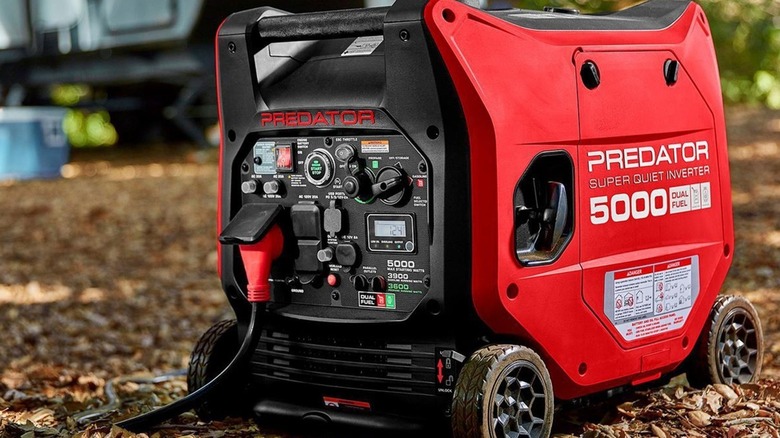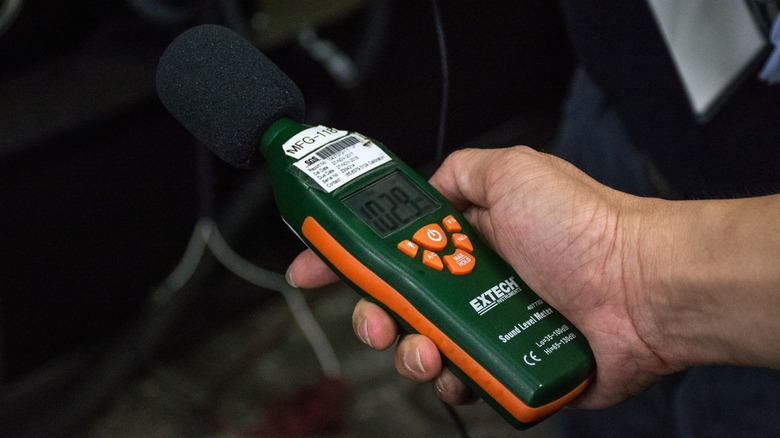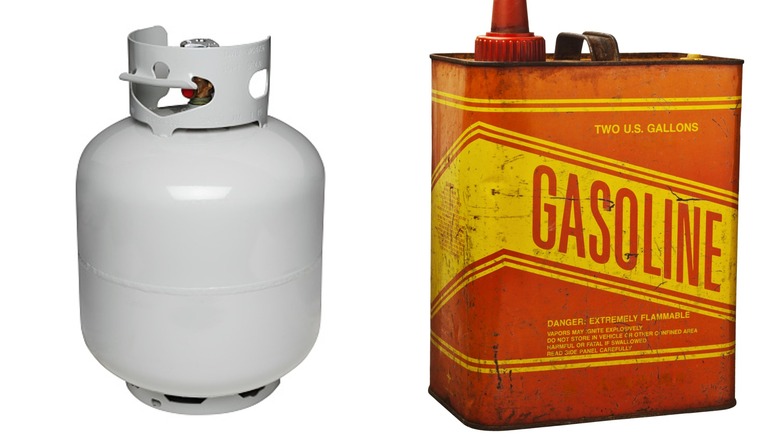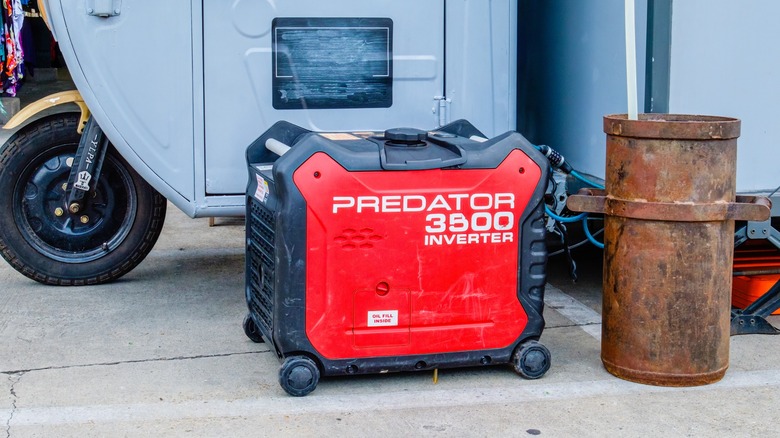Harbor Freight Predator 3500 Vs. Predator 5000: How To Pick The Right Model For You
Generators are often employed during power outages and in off-grid situations to power essential items like lights, refrigerators, and medical equipment as well as charging electronic devices, providing entertainment, and staying comfortable with electric heaters or air conditioning. Some houses are equipped with expensive whole home generators and many recreational vehicles have onboard generators. However, many people make do with portable generators that run on gasoline or propane, or as a dual-fuel unit capable of using either type.
To choose the right generator for your needs you'll have to consider a few things, the first of which is how much noise you are willing to accept. Next, it's good to have some idea of the generator's fuel usage. Will it run overnight on a tank of fuel, or will you be up at 2 a.m. refilling the gas tank outside in the dark while it is most likely raining? Finally, you'll need to consider what you'll expect the generator to power.
Harbor Freight's Predator generators with either 3,500-watt or 5,000-watt outputs offer enough power to run a variety of appliances. While both are solid options for a portable generator, choosing the one that is right for your home will save you money and frustration in the long run.
How loud are they and why does it matter?
Portable generators (other than generators with batteries that are essentially power stations that must be charged before or during use) use an internal combustion engine to create the mechanical force required to spin the generator's electromagnetic internal parts. As electrical demand increases, the engine accelerates to meet it, generating not only the required electrical current, but also increased levels of noise.
The fully enclosed Predator 3500 and Predator 5000 are inverter generators that work differently than open-frame construction-style generators. Inverter generators not only provide cleaner power, but they are also the quietest gas-powered generator. When measured at a distance of around 25 feet, their noise levels are often less than the 60-decibel level of a normal conversation.
At a distance of 23 feet, the Harbor Freight Predator 3500 reportedly produces 56 decibels while running at one-fourth of its capacity. The company lists the decibel level of the 5000 at 60.5 under the same conditions. Be aware that the noise levels produced could vary and will increase as the generator works harder to meet higher electrical demands.
While the sound level emitted by either generator is at or below that of a normal conversation, using either as a power source requires operation for extended periods of time. Imagine being surrounded by people talking nonstop for hours and you'll likely agree that quieter is better.
Do Predator generators use propane or gasoline and how long will a full tank last?
The Predator 3500 uses a gasoline-powered 212cc overhead-valve four-stroke engine with electric start and a pull-start backup. The included fuel tank holds 2.64 gallons of gasoline and features a fuel gauge to monitor the fuel level without removing the cap. When operating at an average 25-percent load (750 watts), the Predator 3500 could run for up to 11 hours on a single tank of fuel. However, an average load of 50-percent (1,500 watts) could reduce that time by two to three hours. Average fuel consumption ranges from 0.24- to 0.33-gallons per hour.
The Harbor Freight Predator 5000 — with its remote-start capable, overhead-valve 224cc four-stroke engine — is a "dual-fuel" generator, allowing operation on either gasoline or propane (LPG) with the included hose adapter. When operating on the 3.7-gallon gas tank, the Predator 5000 has an estimated run time of 18.2 hours at a 25-percent load (975 watts). On propane, operating at a 900-watt load, a 20-pound LPG tank can last up to 14.6 hours. Interestingly, at a 25-percent load, the Predator 5000 has lower gasoline consumption per hour than the less-capable Predator 3500.
How much power do they provide?
The Predator 3500 provides up to 3,500 starting watts, or 29.2 amps at 120 volts. Continuous running wattage drops to 3,000, about 25 amps at 120 volts. Considering many travel trailers are designed to use a 30 amp 120-volt input, that's a pretty good amount of power. These 30-amp campers can typically operate a 15,000 BTU roof-mounted air conditioner, refrigerator, microwave, and water heater simultaneously with power to spare. However, the Predator 3500 will only output a maximum of 120 volts, so it won't power your home's central air conditioning, electric clothes dryer, or electric range.
The dual fuel Predator 5000 produces up to 5,000 starting watts with 41.7 peak amps on either fuel source and drops to 3,900 watts (32.5 amps) on gasoline or 3,600 watts (30 amps) on propane for continuous use. It still only outputs a maximum of 120 volts, but the additional 900 watts (600 watts on propane) allows higher electricity consumption before tripping the integrated overload prevention system (both generators provide overload protection).
Why did we compare the Predator 3500 to the Predator 5000, and which one is better?
We chose to compare these two Harbor Freight generators based on their similar size, weight, and capability. While the Predator 5000 weighs 110 pounds, it's only 8 pounds heavier than the 102-pound Predator 3500.
The Predator 5000 provides USB-A and USB-C charge ports on its control panel (the 3500 does not), remote start, dual-fuel compatibility, higher peak and continuous electrical power, a longer run time, and more efficient use of gasoline. However, the Predator 3500 is slightly smaller overall, 8 pounds lighter, and significantly quieter than the dual-fuel Predator 5000. Harbor Freight lists the Predator 5000 at $1,099.99 while the Predator 3500 is priced lower at $799.99.
The best unit for you will depend on your needs and circumstances. If you only need to power a few lights, a refrigerator, a fan, and charge some electronics, the Predator 3500 can do that all night long on a single tank of gas. It's also quieter, letting you (and your neighbors) get some sleep. However, if you need to power multiple window unit air conditioners and refrigerators while you're away at work all day, the Predator 5000's extra power output and run time will be important.




